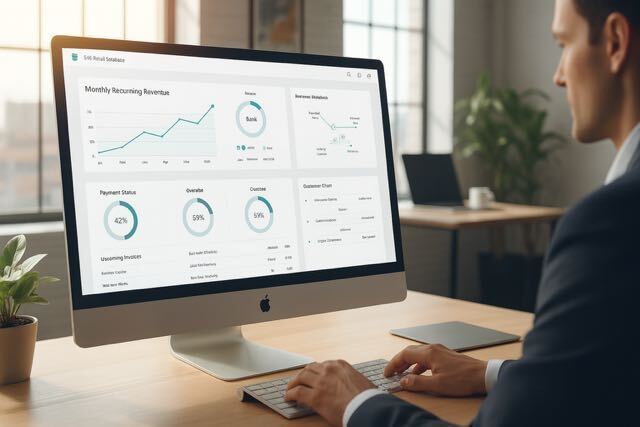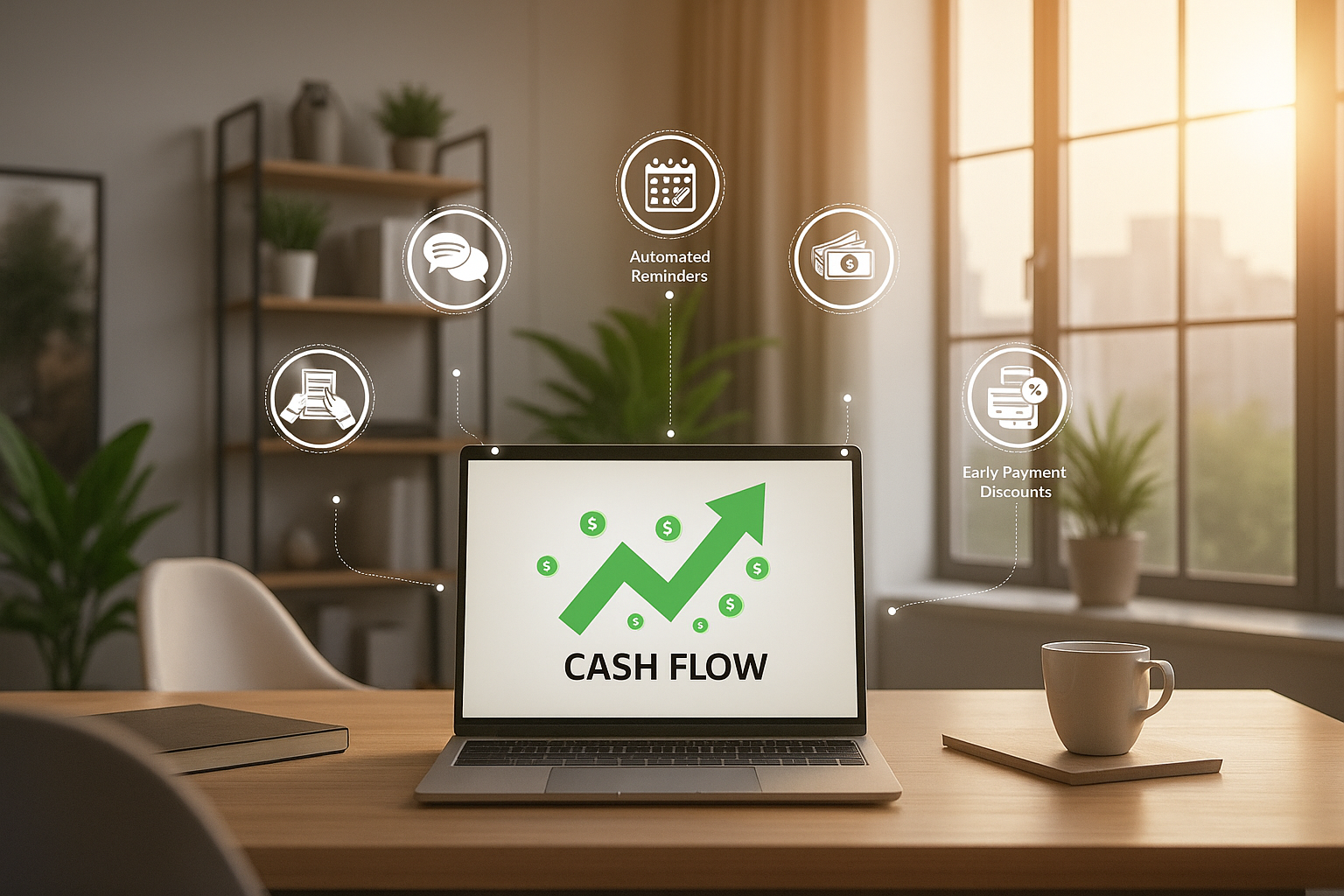14 Things to Include in Your MSP Sales Proposals to Close More Deals

When it comes to winning new clients for your business, your MSP sales proposal can make all the difference. It's your opportunity to demonstrate your understanding of your prospects' needs, showcase your unique value proposition, and differentiate yourself from your competitors.
But what makes an effective MSP sales proposal?
In this article, we'll dive deep into the key elements that MSPs must include to create a winning sales proposal that impresses potential clients and closes more deals.
From outlining your services and pricing to providing case studies and testimonials, we'll cover everything you need to know to create a compelling and persuasive MSP sales proposal.
What is an MSP Sales Proposal?
An MSP sales proposal is a document that plays a critical role in the sales process for Managed Service Providers (MSPs). It serves as a comprehensive presentation of your value proposition as an MSP, demonstrating your understanding of the client's needs and desired business outcomes, proposing specific solutions, and emphasizing what sets you apart from your competitors. A well-crafted sales proposal is not just a mere quote but a complete guide that can help you transform prospects into clients and close more deals.
As an MSP, your sales proposal is likely to be the first interaction with a potential client or stakeholder. Therefore, it is crucial to make a strong, professional first impression. Investing time in the creation of your sales proposal is essential if you want to nurture a successful sales pipeline.
What Should You Include in an MSP Sales Proposal?
As an MSP, creating a sales proposal that captures the attention of your prospects is key to closing deals and nurturing a successful sales pipeline. Here are some essential components that should be included in your MSP sales proposal to make it persuasive and compelling, and at the same time, turn it into a document that helps prospects make an informed purchase decision:

1. Executive Summary
An executive summary is the first thing that your prospect will read, so it's crucial to make it clear, concise, and compelling. To stand out, consider starting with a hook that captures your prospect's attention. Clearly outline the benefits of your MSP services, focusing on how they meet your prospect's unique needs and add value to their business.
2. Plan of Action
A clear and detailed plan of action is crucial to convince your prospects that you have a solid strategy in place for their IT needs. To create a persuasive plan of action, begin by highlighting the pain points of the client and how your MSP services can address those issues. Then, explain your approach in detail, providing approximate timelines, milestones, and realistic SLAs. Consider including visual aids like Gantt charts or project timelines to help your prospects visualize the scope of the work.
3. Social Proof
Social proof is a powerful tool in the world of MSP services. Including compelling testimonials, case studies, awards, certifications, and industry recognition in your sales proposals can help sway the decision-making process of your prospects. Your track record of success is also key in showcasing your MSP's ability to deliver results. Include quantifiable evidence of your MSP's success, such as client retention rates, contract renewals, and success stories.
4. Service Details
The service details section should showcase the value of your services and convince your prospect why they should choose you over your competitors. To make a persuasive case, focus on the results that your services can deliver. Emphasize the benefits of each service and demonstrate how they can contribute to the success of your prospect's business. Additionally, clearly outline the scope of your services and how they will be delivered, including timelines, deliverables, and other relevant information.
5. Unique Selling Proposition
Your unique selling proposition (USP) is the key element that sets you apart from your competitors. In this section, you need to clearly communicate why your MSP is the best choice for your prospect and what unique value you bring to the table.
Your USP should be compelling and emphasize the benefits that your services can offer while also addressing any pain points or challenges that your prospect may have. By clearly articulating your USP, you can differentiate yourself from your competitors and build trust and credibility with your prospect. This could be something as simple as proactive and ongoing customer support, or a success manager being assigned to every customer.
6. Additional Materials
Including supplemental materials like contracts, case studies, playbooks, free guides, and more can help to move the sales process forward. This section should provide any relevant materials that can support your proposal and help your prospect make an informed decision. These materials should be easy to understand and provide additional value to your proposal, reinforcing the benefits of working with your MSP.
7. Benefits
Highlight the benefits of working with your MSP and explain how your services will help your prospect achieve their business goals. Emphasize the outcomes and results that your services can deliver rather than simply listing features. Your goal is to build a compelling case for why your MSP is the best choice for their needs and to show them how your services can contribute to their success. Remember, this aspect is very different from your USP!
8. Costs
Transparency is key when it comes to pricing. Including a breakdown of your service costs in your proposal ensures that your prospect has a clear understanding of the investment required. This section should provide detailed pricing options and demonstrate the value that your MSP delivers at the cost. By being transparent about costs, you can build trust and establish yourself as a credible and reliable partner for your prospect. The pricing breakdown also helps if your MSP offers flexible plans.
9. Call to Action
The call to action section of your proposal is your chance to inspire action and move the conversation forward. It's important to provide clear and concise instructions on the next steps, whether it's scheduling a follow-up call, answering a few more questions about the industry or project, or signing a contract. By providing a sense of urgency and emphasizing the value of your services, you can motivate your prospects to take action.
10. Problem-Solving Capabilities
The problem-solving capabilities section of your proposal should focus on how your MSP can address the specific pain points of your prospects. By highlighting your expertise and solutions, you can demonstrate your ability to solve technical issues and improve overall efficiency. This can help build trust and credibility with your prospects, ultimately leading to a successful partnership.
11. Strategic Advising
The strategic advising section of your proposal should showcase your MSP's ability to provide guidance and insights to your prospects. By demonstrating your knowledge of industry trends and best practices, you can position yourself as a trusted advisor who can help your prospects achieve their business goals. This can help differentiate your MSP from competitors who simply provide technical support.
12. Disaster Recovery and Business Continuity
The disaster recovery and business continuity section of your proposal should highlight your MSP's ability to protect your client's systems and data from unexpected disruptions. By demonstrating your expertise in disaster recovery planning and business continuity, you can provide peace of mind to your prospects and assure them that their business operations will remain intact in the event of a disaster.
13. Software Patching, Monitoring, Management, and Updating
The software patching, monitoring, management, and updating section of your proposal should showcase your MSP's ability to maintain and optimize your client's technology infrastructure. By demonstrating your proactive approach to identifying and resolving issues, you can help your prospects avoid costly downtime and improve overall productivity. This can help position your MSP as a valuable partner who can help drive business growth.
14. Cybersecurity Oversight
The cybersecurity oversight section of your proposal should emphasize your MSP's commitment to protecting your client's data and systems from cyber threats. By highlighting your expertise in cybersecurity and demonstrating your comprehensive approach to protecting against cyber attacks, you can provide assurance to your prospects that their systems are secure. This can help differentiate your MSP from competitors who may not prioritize cybersecurity as much.
While the above components are important to create a persuasive and powerful MSP sales proposal, it's important to note that they are not one-size-fits-all. To be truly effective, your proposal should be tailored to the specific needs and pain points of your prospect. By understanding your prospect's business goals and challenges, you can create a proposal that speaks directly to their needs and demonstrates how your MSP services can provide the solutions they require.
Things That Make Each of the MSP Proposal Elements More Powerful
To make your MSP sales proposal stand out and convert prospects into clients, you need to include certain features that will make it more powerful. Here are six elements to focus on when writing your proposal:
- Personalize your sales proposal: Tailor your proposal to your specific audience by customizing the template, language, and content to match their expectations. Show that you understand their unique business aspirations and challenges by reiterating previous discussions and providing context for your solutions.
- Make it more outcome-focused: Center your proposal around the outcomes that your prospects will see as a result of your services. Use quantifiable offerings and explain how you will help your prospects achieve their specific goals.
- Offer multiple options: Offer a range of different service options at different price points. This allows prospects to choose the service that best suits their needs and budget without limiting their profitability.
- Foster forward-thinking: Encourage long-term business relationships that can offer you recurring retainers. Establish a robust and reliable partnership with your prospects to avoid operational disruptions and frequent IT provider switches.
- Avoid technical jargon: Make your sales proposal accessible and understandable by avoiding IT jargon and specific technical details of your solutions. Present your IT services in clear and concise terms that everyone can understand.
- Include clear terms: Clearly establish the terms of your service, including available working hours, devices and machinery covered, and fair use policy. Be transparent about additional fees for certain services or out-of-hours support to avoid misunderstandings.
By incorporating these elements into your MSP sales proposal, you can create a powerful and persuasive document that will impress your prospects and encourage them to do business with you.
Ready to Create a Winning MSP Sales Proposal?
A successful MSP sales proposal is one that is personalized to the unique needs of your prospects while still including essential elements that demonstrate your value proposition. A one-size-fits-all approach to sales proposals is unlikely to succeed, and it's crucial to tailor your proposal to each individual client.
Fortunately, with Zomentum's sales proposal templates, you can streamline the proposal creation process and easily customize each proposal to meet your client's specific requirements. By incorporating the essential elements we've discussed in this article, you can create compelling proposals that differentiate your MSP business from your competitors and win more deals.
To see the benefits of Zomentum's sales proposal templates in action, book a demo today. And for even more insights on creating successful MSP sales proposals, be sure to download our ebook, "The MSP's Guide to Creating Successful Sales Proposals."





.png)









